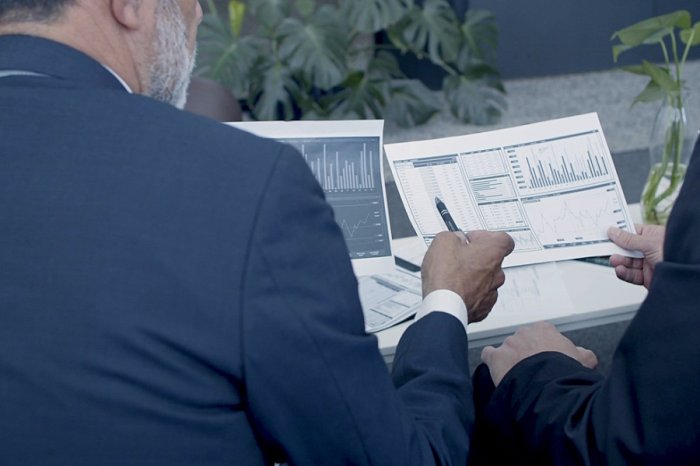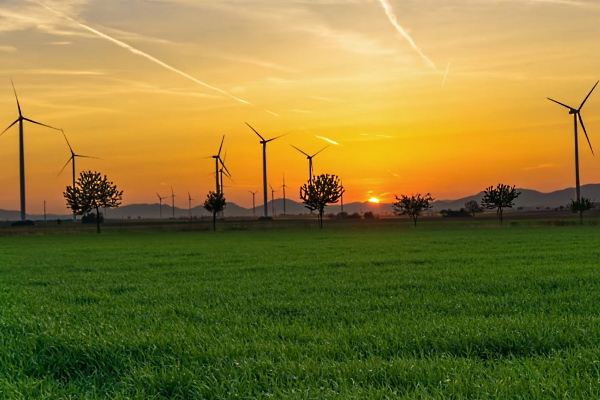After receiving the necessary documents and project presentation, our team will try to review your request as soon as possible, and leading experts will offer the best options for project funding.
Over the past two decades, the country has invested heavily in the development of wind farms, which has led to a significant increase in the production of electricity from renewable sources. According to statistics, over the past two decades the share of wind energy in Ireland's energy mix has more than doubled.
Combined with favorable climate conditions and a drive to reduce greenhouse gas emissions, Ireland's investment in wind energy bodes well for long-term stability and growth prospects in the renewable energy sector.
GCAM Investment Group is actively involved in financing the construction and modernization of wind farms in Ireland, including offering long-term loans and consulting services. Our team also develops customized project finance schemes, provides comprehensive advisory support to clients at all stages of RES investment projects.
Wind energy investment is transforming Ireland's economy
Over the past decades, the installed capacity of wind energy in Ireland has grown markedly.In 2008, the installed capacity was about 1030 megawatts, but by 2022 it has reached 4620 megawatts. This impressive growth testifies to the rapid development of wind energy in the country. The increase in installed capacity during this period was about 350%, which is clear evidence of the attention to renewable energy sources.
Ireland started relatively late in the development of wind energy, but quickly caught up and became one of the key countries in the field of renewable energy. The table below provides a brief history of the development of wind power in Ireland.
Table. Key milestones in the development of the Irish wind energy sector
| Period | Achievements and trends |
| 1970-1980 | The first experiments with wind turbines in Ireland began in the 1970s, but at that time wind power remained practically experimental. In the early 1980s, small wind turbines were installed on Torrey Island in Comte de Donegal and several other locations. |
| 1990-2000 | In the 1990s, serious investment activity in the field of wind energy began in Ireland. One of the first commercial wind parks was the Bellacorick Wind Farm in County Mayo, which began operations in 1992. At this time, more modern and efficient wind energy technologies were introduced. |
| 2000-2010 | In the early 2000s, there was a lot of investment in wind energy in Ireland, and the country began to develop actively in this area. Wind energy projects such as the Kilronan Wind Farm and the Cork Wind Energy Project have become larger and more advanced. |
| 2010-2020 | During this period, Ireland continued to expand its wind infrastructure. New investment projects such as Galway Wind Park and Cloghan Wind Farm are among the largest in Europe. Ireland has also begun to develop offshore wind power, opening up new growth opportunities for the industry. |
| After 2020 | As the European economy recovered from the pandemic, Ireland continued to implement major energy projects and thereby increase the share of wind energy in its energy mix. The country is setting ambitious goals to move away from fossil fuels in the coming decades, while actively investing in climate-neutral technologies. |
Galway Wind Park is the largest wind park located in Count Galway, on the west coast of Ireland.
The project was jointly designed and implemented by SSE Renewables and Coillte and is one of the largest renewable energy investments in Ireland. The project was launched in the late 2000s with the aim of harnessing the region's rich wind resources and increasing the share of renewable energy in the country's energy mix.
The huge investments made by Irish and international companies in wind energy not only help to reduce carbon emissions, but also contribute to the diversification of the country's energy portfolio, providing a predictable, stable and environmentally friendly energy supply.
Across the country, the implementation of wind energy projects is attracting the attention of a number of large companies in the field of renewable energy.
Some of them include:
• SSE Renewables is actively investing in wind power sector across the Ireland. The Galway Wind Park project (174 MW), created in collaboration with Coillte, demonstrates their contribution to the development of renewable energy.
• Vestas Wind Systems is actively involved in building wind farms in Ireland. An example is the Cloghan Point Wind Farm (37.8MW), where Vestas turbines have been installed.
• EDF Renewables is a key player in the development of wind energy sector in Ireland. The Codling Wind Park (1.45 GW) is a huge joint project between EDF Renewables and Fred. Olsen Renewables AS is one of the largest wind farms in Europe.
• Statkraft is also involved in wind projects, including those with energy storage systems. An example is the Kilathmoy Wind Farm with a capacity of more than 23 MW.
Although the installed capacity of wind farms in this country is small compared to European giants such as the United Kingdom or Germany, Ireland continues to strengthen its position as a leader in the field of wind energy, with ambitious plans for further development. The focus on expanding wind farms and upgrading technology is evidenced by a steady influx of investment from both domestic and foreign partners.

Ireland is not a major manufacturer of equipment for wind farms. However, in Ireland there are numerous offices of some international manufacturers, as well as local companies providing services in the field of engineering and maintenance of wind energy projects.
Manufacturers of wind farm equipment in other countries are also actively supplying their products to Ireland, contributing to the development of the local wind energy sector.
Bank financing of wind farms in Ireland
In recent decades, Ireland has established itself as an important player on the world stage in the field of wind energy.This success would not have been possible without the active participation of banks and financial institutions, which have become key drivers in the development of wind power plants across the country. Bank financing has become the engine for the construction of wind farms, providing the necessary investment to build the renewable energy infrastructure.
Financing of wind farms in Ireland is carried out with the participation of leading commercial banks and financial institutions. Some of them are listed below.
AIB (Allied Irish Banks)
AIB is one of the largest banks in Ireland and is actively involved in the financing of wind energy projects. For example, AIB was one of the participants in the financing of the Galway Wind Park.Bank of Ireland
Another major bank in Ireland that supports wind energy development. It can provide long-term investment loans and financing for wind projects.KfW IPEX-Bank
This German bank is also involved in the financing of wind farms outside of Germany. It can provide financing for both the development and operation of projects in European countries.European Investment Bank (EIB)
The EIB is a European bank that can provide financing for infrastructure projects, including wind energy. He can be a key partner in projects of varying complexity.Green Investment Group (GIG)
GIG is a financial institution specializing in investing in renewable energy projects. It can provide financing and promote wind energy development.Renewable Energy Investment Fund (REIF)
This fund can invest in renewable energy projects outside the UK, including Ireland.Since 2010, interest in financing wind energy projects in Ireland has increased significantly and the range of available sources of capital has expanded. In addition to traditional sources such as bank loans, there has been an increase in interest in renewable energy investments from funds and institutional investors. This is also the period when the construction and modernization of wind farms became more massive and widespread.
The largest wind farm in Ireland
The 174 MW Galway Wind Farm, jointly owned by SSE Renewables and Greencoat Renewables, located in the Clush Valley in Connemara, is Ireland's largest and most efficient onshore wind farm, producing more green energy than any other wind farm on the island.The Galway Wind Farm was developed by SSE Renewables and Coillte in a joint investment of over 280 million euros, with 20 million euros spent on local contractors. The electricity generated at the Galway Wind Farm is retailed through SSE Airtricity, Ireland's largest supplier of green energy.
The Galway Wind Park was jointly funded by SSE Renewables and Coillte.
• SSE Renewables is a UK-based company that owns and operates a variety of renewable energy sources including wind farms and hydroelectric power plants. SSE Renewables has made major investments in the construction and operation of the Galway Wind Farm.
• Coillte is an Irish state-owned forestry and land management company. Coillte has also been actively involved in the co-financing and development of the Galway Wind Farm.
This co-financing and partnership between SSE Renewables and Coillte enabled the creation and operation of the wind farm, which has become the largest and most efficient onshore wind farm in Ireland, and one of the country's important sources of green energy.
Located southwest of Oterard, the Galway Wind Farm consists of 58 Siemens wind turbines of 3 MW each, meeting the highest international standards and specifically designed for the prevailing wind conditions on site in Connemara to optimize generation performance.
The Galway Wind Farm produces enough renewable energy annually to power more than 140,000 Irish homes. This means that the wind farm can provide more energy than the equivalent of all homes in Galway City and County.
In a typical year, the green energy produced at the wind farm offsets over 140,000 metric tons of harmful CO2 emissions.

Future prospects for financing wind farms in Ireland
The development and financing of new wind farms in Ireland is an important part of the country's strategy to increase the share of renewable energy in the energy mix.Listed below are a few facts and figures that reflect the outlook for this industry:
• The total capacity of wind farms. Ireland has deployed a total wind farm capacity of over 5.5 gigawatts (GW) by 2021. This makes Ireland one of the leading countries in Europe in terms of installed wind energy capacity.
• Future plans. Ireland aims to increase the share of renewable energy to 70% in electricity generation by 2030. This implies additional investments in wind energy.
• Investments. Recent investment in wind power in Ireland is in the billions of euros. An example is the Galway Wind Farm, which cost more than 280 million euros.
• The role of foreign investors. Wind power in Ireland is attracting significant investment from foreign companies and banks. This testifies to the international interest in this area.
• Work and employment. The development and operation of wind farms in Ireland employs thousands of people, which further contributes to the creation of new high-paying jobs and economic activity in the country.
• Government support. Ireland actively supports the development of renewable energy through various measures, including government subsidies and tax incentives.
• Growing demand for green energy. With increasing awareness of climate issues and pressure to reduce greenhouse gas emissions, the demand for green energy, including wind energy, is growing rapidly.
• Export of surplus energy. Ireland is also considering exporting excess wind energy, especially to the United Kingdom, through undersea cable projects.
• Technological innovation. Ireland is currently actively developing and implementing technological innovations, such as more efficient and reliable wind turbines.
Overall, Ireland sees the development of wind energy as a key element of its energy strategy and, given the growing interest in renewable energy in the world, this industry remains promising for investment and development.




























